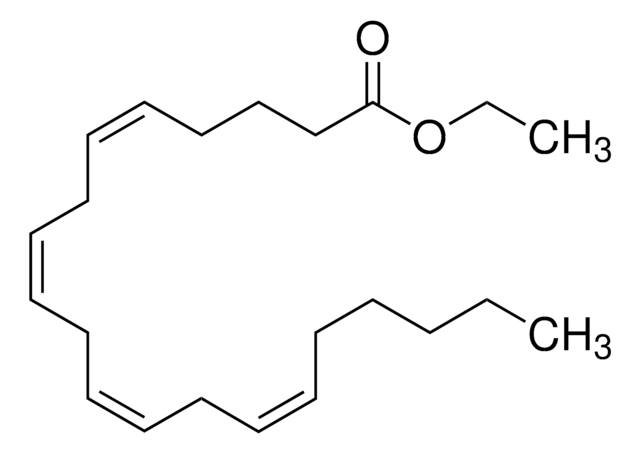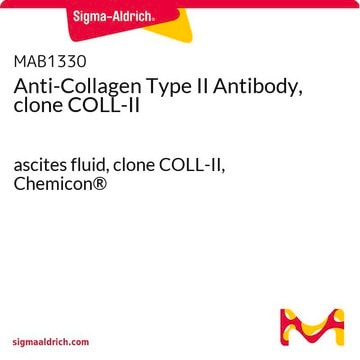AB761
Anti-Collagen Type II Antibody
Chemicon®, from rabbit
Sinonimo/i:
Anti-Anti-ANFH, Anti-Anti-AOM, Anti-Anti-COL11A3, Anti-Anti-SEDC, Anti-Anti-STL1
About This Item
Prodotti consigliati
Origine biologica
rabbit
Livello qualitativo
Forma dell’anticorpo
affinity isolated antibody
Tipo di anticorpo
primary antibodies
Clone
polyclonal
Purificato mediante
affinity chromatography
Reattività contro le specie
human
Produttore/marchio commerciale
Chemicon®
tecniche
ELISA: suitable
immunocytochemistry: suitable
immunohistochemistry: suitable
western blot: suitable
N° accesso NCBI
N° accesso UniProt
Condizioni di spedizione
wet ice
modifica post-traduzionali bersaglio
unmodified
Informazioni sul gene
human ... COL2A1(1280)
Specificità
Cross Reactivity Percent
Human collagen type II 90%
Human collagen type I, III, IV, V <1%
Human plasma proteins do not interfere with binding to collagen.
Immunogeno
Applicazioni
Indirect immunofluorescence on cryostat sections or cultured cells 1:10-1:20
Western Blot 1:100
Optimal working dilutions must be determined by the end user.
Cell Structure
ECM Proteins
Stato fisico
Product is liquid in 0.15M sodium chloride, 10mM sodium phosphate pH 7.5 with 0.1% mannitol and 0.1% dextran as stabilizers. No preservative.
Stoccaggio e stabilità
Note legali
Esclusione di responsabilità
Not finding the right product?
Try our Motore di ricerca dei prodotti.
Avvertenze
Danger
Indicazioni di pericolo
Consigli di prudenza
Classi di pericolo
Repr. 1B
Codice della classe di stoccaggio
6.1D - Non-combustible acute toxic Cat.3 / toxic hazardous materials or hazardous materials causing chronic effects
Classe di pericolosità dell'acqua (WGK)
WGK 2
Punto d’infiammabilità (°F)
Not applicable
Punto d’infiammabilità (°C)
Not applicable
Certificati d'analisi (COA)
Cerca il Certificati d'analisi (COA) digitando il numero di lotto/batch corrispondente. I numeri di lotto o di batch sono stampati sull'etichetta dei prodotti dopo la parola ‘Lotto’ o ‘Batch’.
Possiedi già questo prodotto?
I documenti relativi ai prodotti acquistati recentemente sono disponibili nell’Archivio dei documenti.
Il team dei nostri ricercatori vanta grande esperienza in tutte le aree della ricerca quali Life Science, scienza dei materiali, sintesi chimica, cromatografia, discipline analitiche, ecc..
Contatta l'Assistenza Tecnica.









